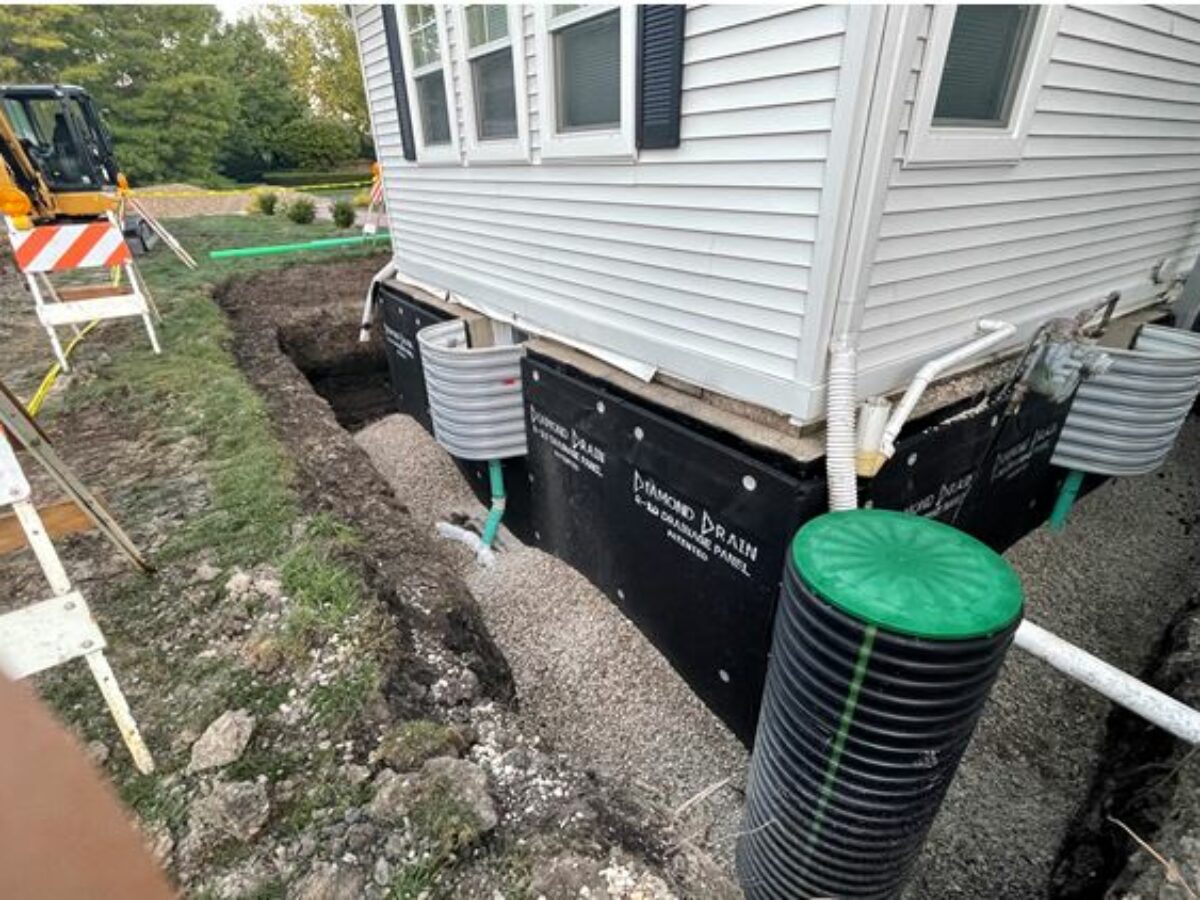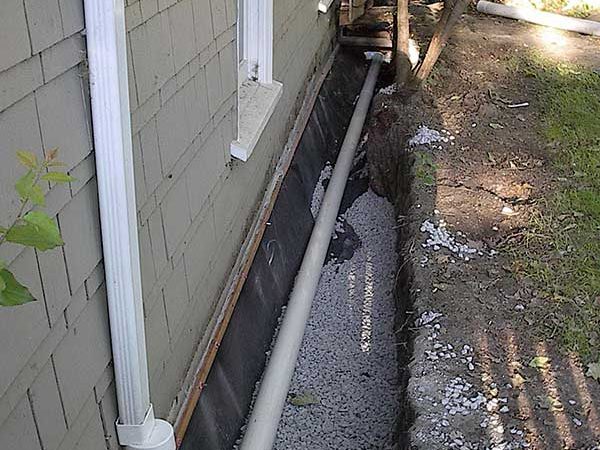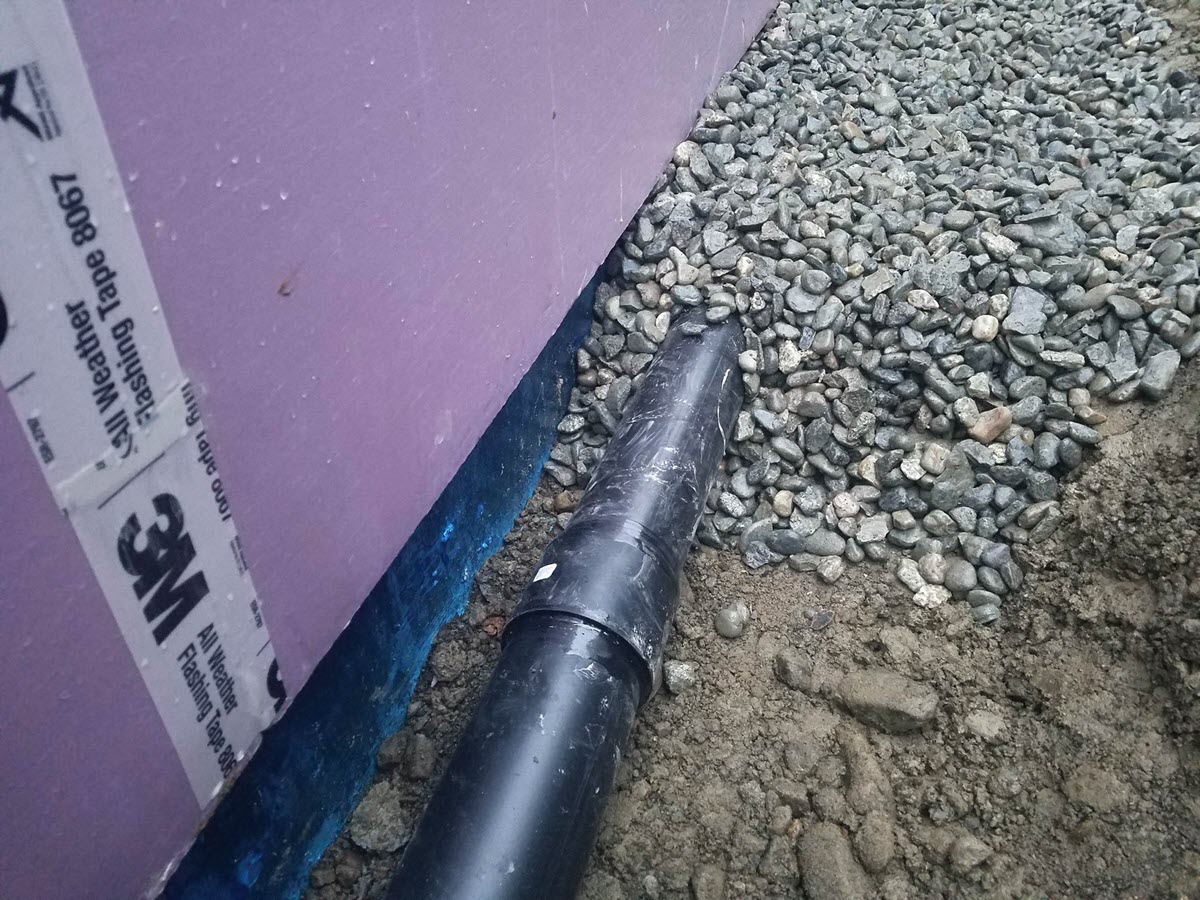Foundation Drain Servicesin Romeo MI
Foundation Drain Solutions to Keep Your Building Secure
We Are Locally Owned & Operated For Over 37 Years
Contact Us Today!
We Serve Businesses In And Around The Following Cities:
About Foundation Drain Services
Mastering Foundation Drain System: A Comprehensive Guide for Commercial Buildings in Romeo
As you stroll across the timeless architectural charm and landscape of Romeo, Michigan, the elegance of the commercial buildings arrests your attention. Preserved and popular for their unique design and strength, these structures stand tall, largely unaffected by the harsh weather elements, particularly the copious amounts of rainwater that could potentially soak into their foundations. A contributing factor to this resilience is a well-installed foundation drain, an essential asset to every commercial property. Here, we unravel the intricacies of foundation drainage systems and how they play a pivotal role in maintaining the structural integrity of commercial properties in Romeo.
Demystifying the Foundation Drain Concept
A high-functioning foundation drain system, sometimes referred to as a French drain, is a key tool in ensuring the soundness and longevity of commercial establishments. Installing a foundation drain ensures that water is effectively funneled away from the building’s base, preventing it from pooling around the foundation’s perimeter. This way, a foundation drain safeguards against potential damage caused by excess moisture, such as cracks, leaks, or even foundation subsidence.
The Foundation Drain Installation Process
The installation of a foundation drain, although intricate, brings numerous benefits once completed. The process involves creating a trench close to the foundation wall, laying perforated pipes that lead to a safe distance away from the foundation, and finally covering the trench with gravel to facilitate the easy flow of water. The drain water is then safely led away from the house foundation, preventing any accumulation around it. The presence of Romeo’s reliable D&J Contracting services makes this installation process hassle-free for commercial establishments.
Key Elements in a Foundation Drain System
The three crucial components of a drainage system around a foundation are the exterior foundation drain, foundation footer drain, and the foundation wall drainage system. The exterior foundation drain collects water accumulating near the foundation and redirects it away, while the footer drain – positioned around the foundation’s footing – prevents water from permeating the basement. Meanwhile, the wall drainage system helps manage any water that might seep through the foundation walls. Properly installed foundation water drainage systems are crucial in the city of Romeo, often subjected to heavy rainfall, to maintain the structural integrity of commercial establishments.
The Tangible Benefits of a Foundation Drain
Foundation drainage systems, when executed correctly, offer several undeniable benefits. They counteract destructive hydrostatic pressure, protecting the property’s foundation from water damage, subsidence, and soil erosion. They also ensure a dry and safe basement, preventing the growth of mold and mildew that can affect the building’s occupants’ health.
For instance, a building in Downtown Romeo experienced recurrent flooding issues in its basement. After installing a foundation drain system with the expert assistance from D&J Contracting, not only were their flooding woes resolved, but the overall comfort and safety of the building inhabitants greatly improved.
The Role of D&J Contracting in Foundation Drainage Systems Installation
D&J Contracting’s expertise in installing and maintaining foundation drain systems has positively impacted numerous commercial structures in Romeo. Their proficient teams ensure that drains around house foundations meet the necessary specifications, providing long-lasting solutions to moisture-related issues. Their strength lies in personalized, efficient services, ensuring any drain system around foundation aligns perfectly with the intricacies of each building’s structure.
As you look at the skyline of Romeo, the seamless integration of foundation drainage systems into commercial properties stands out as a testament to advanced civil engineering techniques. Understanding the necessity of well-installed foundation drains can improve the longevity of commercial structures, holding them intact against the onslaught of weather abuses. It reaffirms the importance of a foundation drain for the commercial properties of Romeo and calls attention to the commendable service of D&J Contracting in maintaining their safe harbor. Now is the time to benefit from such invaluable service offerings and rest assured of your property’s robust foundation drainage.
Foundation Drain Services Gallery


Call Us Today to receive your Free Quote for
Foundation Drain in Romeo
Serving: Romeo, Michigan

About Romeo, Michigan
A settlement here was originally occupied by the indigenous Chippewa (Ojibwe), an Algonquian-speaking people who were part of a large language family of tribes extending to the Atlantic Coast. Those tribes around the Great Lakes are thought to have migrated to this area by the 12th century.
The early European-American settlers in this area referred to the Chippewa settlement as “Indian Village”. In the 1820s and 1830s more migrant European-American families began to settle in the area, building homes and establishing businesses. They renamed the community “Hoxie’s Settlement”, after a man who opened an inn on Main Street. In 1839, Hoxie’s Settlement became incorporated and was renamed as the village of Romeo. The name was suggested by the wife of local merchant Nathaniel Taylor because it was “short, musical, classical and uncommon.” Romeo celebrated its 175th anniversary on March 9, 2013.
Romeo once served as a trading center for the timber industry, and had many mills processing lumber from the region. Many wealthy timber families resided there. Dozens of stately Victorian mansions survive. Romeo is distinct in the area for having a fairly robust, traditional downtown, which has never suffered a major fire. Because of this, some stores and restaurants downtown have features such as original tin ceilings from the Civil War. In the early 20th century, Romeo was the site of an early business devoted to the new automobile industry: the Detroit Auto Vehicle Company operated here from 1904 until 1908.
The village is in northwestern Macomb County, situated at the southeast corner of Bruce Township, with a portion extending south into Washington Township. Armada Township is adjacent to the east and Ray Township to the southeast. M-53 passes through the east side of the village, leading north 16 miles (26 km) to Imlay City and south 30 miles (48 km) to the eastern side of Detroit.
According to the United States Census Bureau, the village of Romeo has a total area of 2.05 square miles (5.31 km), of which 0.002 square miles (0.005 km), or 0.10%, are water. East Pond Creek crosses the easternmost part of the village, flowing east to the North Branch of the Clinton River, part of the Lake St. Clair watershed.
| Census | Pop. | Note | %± |
|---|---|---|---|
| 1850 | 330 | — | |
| 1880 | 1,629 | — | |
| 1890 | 1,637 | 0.5% | |
| 1900 | 1,580 | −3.5% | |
| 1910 | 1,787 | 13.1% | |
| 1920 | 2,102 | 17.6% | |
| 1930 | 2,283 | 8.6% | |
| 1940 | 2,627 | 15.1% | |
| 1950 | 2,985 | 13.6% | |
| 1960 | 3,327 | 11.5% | |
| 1970 | 4,012 | 20.6% | |
| 1980 | 3,509 | −12.5% | |
| 1990 | 3,520 | 0.3% | |
| 2000 | 3,721 | 5.7% | |
| 2010 | 3,596 | −3.4% | |
| 2020 | 3,767 | 4.8% | |
| U.S. Decennial Census | |||
As of the census of 2010, there were 3,596 people, 1,501 households, and 979 families residing in the village. The population density was 1,780.2 inhabitants per square mile (687.3/km). There were 1,659 housing units at an average density of 821.3 per square mile (317.1/km). The racial makeup of the village was 91.9% White, 3.8% African American, 0.2% Native American, 0.5% Asian, 1.1% from other races, and 2.6% from two or more races. Hispanic or Latino people of any race were 5.7% of the population.
There were 1,501 households, of which 32.2% had children under the age of 18 living with them, 46.2% were married couples living together, 14.9% had a female householder with no husband present, 4.1% had a male householder with no wife present, and 34.8% were non-families. 30.8% of all households were made up of individuals, and 13.6% had someone living alone who was 65 years of age or older. The average household size was 2.36 and the average family size was 2.96.
The median age in the village was 40.9 years. 23.5% of residents were under the age of 18; 7.7% were between the ages of 18 and 24; 24.1% were from 25 to 44; 29.4% were from 45 to 64; and 15.3% were 65 years of age or older. The gender makeup of the village was 46.4% male and 53.6% female.
As of the census of 2000, there were 3,721 people, 1,528 households, and 993 families residing in the village. The population density was 1,842.8 inhabitants per square mile (711.5/km). There were 1,605 housing units at an average density of 794.9 per square mile (306.9/km). The racial makeup of the village was 92.66% White, 4.35% African American, 0.16% Native American, 0.40% Asian, 0.11% Pacific Islander, 0.67% from other races, and 1.64% from two or more races. Hispanic or Latino people of any race were 2.74% of the population.
There were 1,528 households, out of which 33.3% had children under the age of 18 living with them, 48.2% were married couples living together, 13.5% had a female householder with no husband present, and 35.0% were non-families. 31.3% of all households were made up of individuals, and 13.2% had someone living alone who was 65 years of age or older. The average household size was 2.40 and the average family size was 3.04.
In the village, the population was spread out, with 26.1% under the age of 18, 8.2% from 18 to 24, 30.1% from 25 to 44, 21.4% from 45 to 64, and 14.2% who were 65 years of age or older. The median age was 36 years. For every 100 females, there were 87.2 males. For every 100 females age 18 and over, there were 82.5 males.
The median income for a household in the village was $48,015, and the median income for a family was $60,179. Males had a median income of $51,875 versus $27,696 for females. The per capita income for the village was $22,588. About 3.2% of families and 3.9% of the population were below the poverty line, including 6.5% of those under age 18 and 3.9% of those age 65 or over.
The government of the village of Romeo consists of elected and appointed officials. The elected officials include six council members, one president, treasurer and clerk. The appointed officials include the Chief of Police, Department of Public Works Director, and Village Administrator. Currently, the elected clerk also holds the appointed position of Village Administrator. The day-to-day operations of the village are handled by the Clerk/Administrator.
Since the turn of the 21st century, Romeo has worked to upgrade its infrastructure. It has improved the streetscape on Van Dyke Avenue, the main road through the village, and installed a new water tower. It had earlier established one of the few wastewater treatment plants in the region. While most of the metropolitan region receives water and sewage service from the City of Detroit, Romeo independently sustains its own supply of water and manages treatment of village sewage. This was especially valuable during the blackout that occurred throughout the entire northeastern United States on August 14, 2003. Romeo was one of the few areas in the Detroit metropolitan area to have clean running water. More recent infrastructure improvements include a complete renovation of the village water system, and replacement of all the sidewalks throughout the village.
Call Us Today to receive your Free Quote for
Foundation Drain in Romeo
Related Services in Romeo, Michigan
We Serve Businesses In The Following Zip Codes:
48007, 48015, 48021, 48026, 48035, 48036, 48038, 48042, 48043, 48044, 48045, 48046, 48047, 48048, 48050, 48051, 48066, 48071, 48080, 48081, 48082, 48083, 48084, 48085, 48088, 48089, 48090, 48091, 48092, 48093, 48098, 48099, 48225, 48230, 48236, 48310, 48311, 48312, 48313, 48314, 48315, 48316, 48317, 48318, 48397